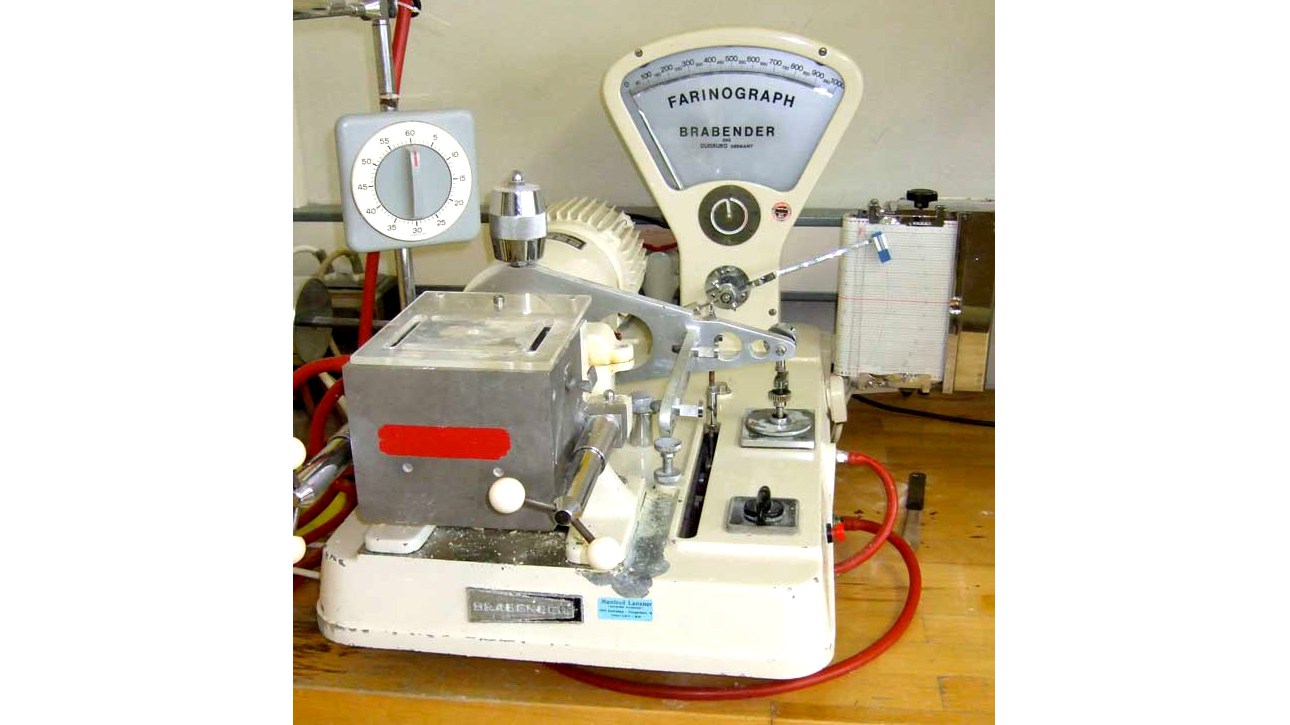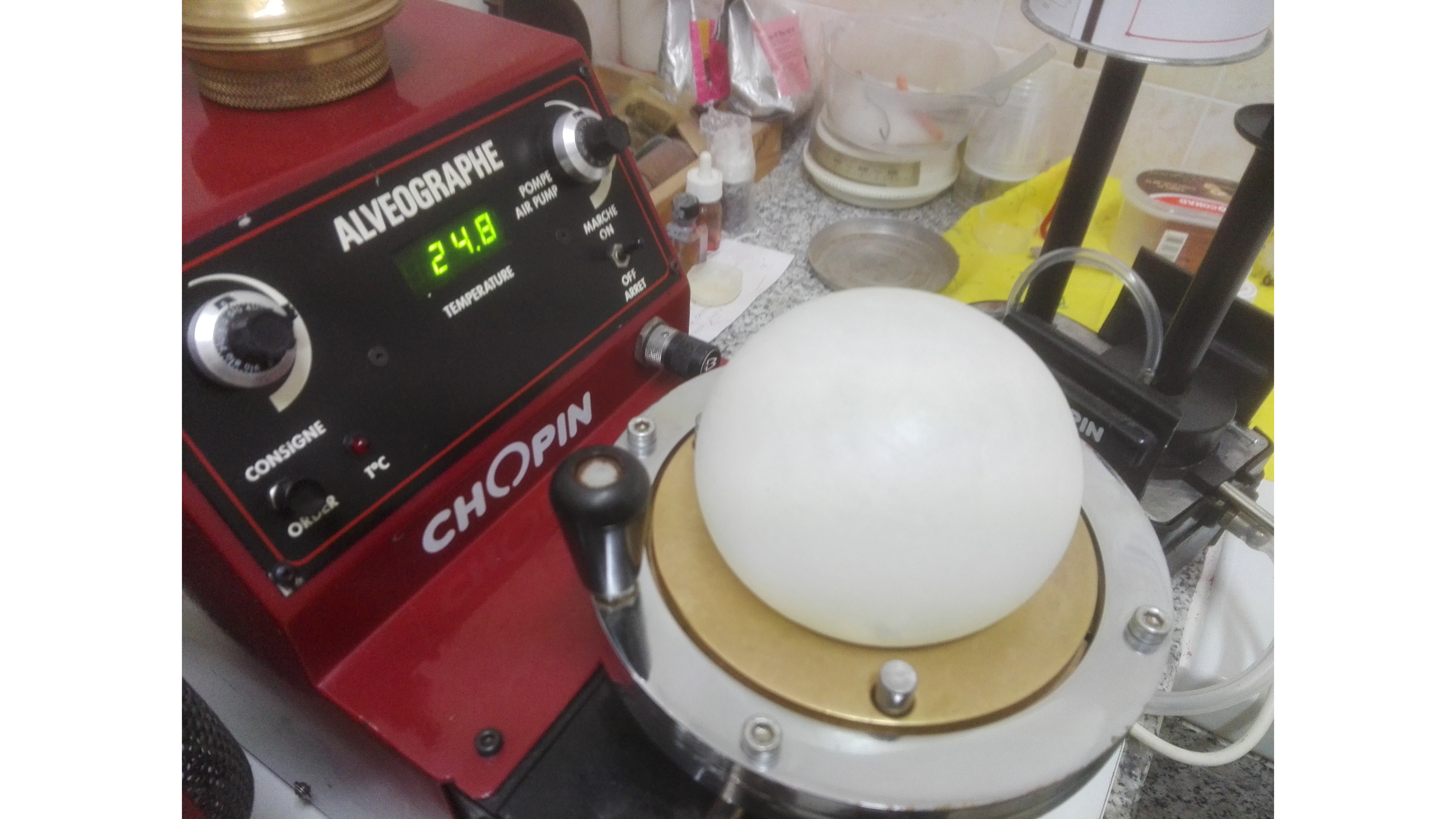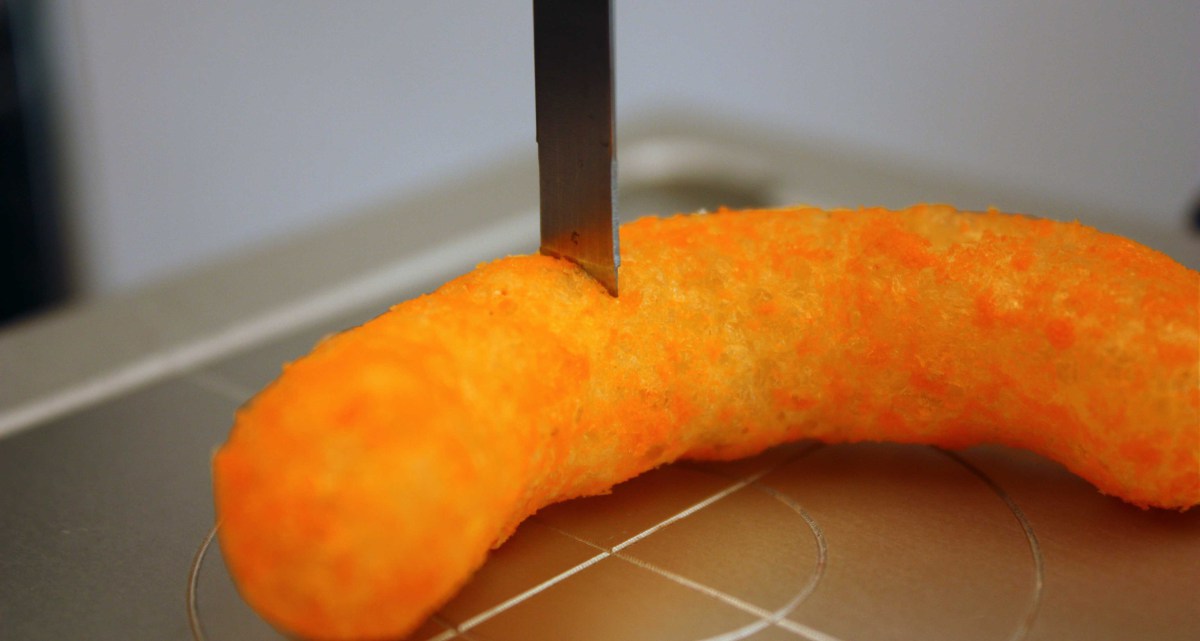The human body is a surprisingly versatile instrument for testing edibles of all kinds. Our fingers can break and bend foods, our noses can sniff for ripeness and rottenness, our eyes measure color and detect blemishes, and our teeth and tongues tackle texture. But for food and drink manufacturers that need to establish a precise baseline of consistency across a huge number of products, the human body can’t always provide the kind of hard data that’s needed. (That said, some scientists have forced panels of humans to, for example, measure how many chews it takes before it’s possible to swallow a Tootsie Roll.)
For decades, scientists and researchers have been coming up with ways to get that hard data, and in large part, that requires some gadgets. Humans have invented specialized machines to measure every possible quality of a food you can think of. And for every quality you can think of, there are about ten you’d never come up with on your own. From measuring the precise pressure it takes to snap a cookie, to the force needed to pull apart mozzarella cheese, to a rotating device that measures how far you can twist an apple before it breaks, there is a massive and often hilarious world of machines designed to push food to the breaking point, in the interest of figuring out exactly what it takes to do so.
Here are some of our favorites:
The Smooshiness of a Date
“Testing the firmness of dates presents a special challenge,” says the website of the Food Technology Corporation (FTC). The problem is that a date comprises a very soft item (the flesh) surrounding a very hard item (the pit). But removing the pit before testing the date would throw off all the data (date-a?) by changing the basic shape of the date. So FTC came up with a solution: a cylinder probe compression method (read: a cylinder that smooshes something against a table) with a twist. Instead of a plain table, FTC cut out a small hole in the table. When the date is smashed, the pit slips through the hole, so the machine can perfectly measure the natural treat’s texture every time.
The Torsion Strength of an Apple
Nobody likes a mushy or mealy apple. But our mouths are not very good at recording precise information about firmness. In 1992, two scientists created the Massey Twist Tester. A fruit is impaled on a blade. The user then slowly rotates the fruit, while a counterweight makes the blade increasingly harder to turn (and of course measures exactly how hard to turn it is). At some point, the strength of the apple will be unable to keep the blade in place, and it’ll break through—in technical terms, “the flesh fails completely.” The Massey Twist Tester measures just how much force that takes. Mushier apples fail sooner than firm-fleshed specimens.
The Tenderness of a Pea
Research indicates that the texture of peas plays a significant role in whether we think they are appealing. Peas can range from tender and succulent to starchy and tough, and people much prefer the tender ones. In the interest of coming up with a measurement for the quality of peas, way back in 1937, the American Can Company built a a five-foot-tall, 700-pound machine they called the Tenderometer, which smashes peas between flat surfaces to measure the amount of force they can withstand. Tender peas flatten easier than tougher ones. Electronic Tenderometer measurements are still the pea industry standard.
The Satisfying Sounds of Food
A lot of modern food texture measurements are done by very slowly pressing a variety of different tools—a blade, a cylinder, a sphere—into a crisp food until it suddenly breaks, revealing the exact amount of strain it can withstand. That tells us a lot! But the amount of force needed to chew through a cookie isn’t the only variable that can tell us how much we’ll enjoy eating said cookie.
Stable Micro Systems recently introduced an Acoustic Envelope Detector designed to measure the sound of a breaking food, which users can specifically tune to avoid picking up any sound from the machine that’s breaking it. Manufacturers can use it to standardize the snap of a gingersnap, the fizz let off when a beer is popped, or the crunch of a mouthful of cereal.
The Force It Takes to Scrape an Artichoke Leaf with Your Teeth
Artichokes, rude spiky members of the thistle family that are full of tough fibers, do not give up their goodness easily. The typical way to eat an artichoke is to use your bottom teeth to scrape off the tender inside meat from the scales surrounding the (fully edible) heart. But depending on growing conditions and maturity, some artichokes are tougher than others, and it stands to reason that you might want a way to measure just how tender the flesh on those scales is. Texture Technologies Corp. figured out a way to use its multipurpose TA.XTPlus Texture Analyzer for that purpose: it grips the spiky top of a leaf and pulls it slowly through two metal brackets that mechanically gnaw off the delicious flesh.

How to Get the Perfect Bread Dough
Bread dough is a complex substance with a dizzying number of variables, and flour can vary from crop to crop or shipment to shipment. For a commercial baker, it can take many iterations of a dough recipe to figure out some of the most important properties of an optimal dough: How long does it take the flour to absorb water? How long does it take to achieve the optimum stretchiness of the dough? How long before mixing becomes overmixing? The Brabender company created the perfect device to figure that stuff out way back in 1928: the Farinograph. It’s basically a dough mixer with lots of sensors in it, measuring (in Brabender Units) precisely how and when all those factors come into play. Modern versions are still used today by bakers and flour mills to track the properties of flours.

How to Measure the Flow of Ketchup
Sometimes you don’t need to overthink things. Want to measure how fast a thick liquid will flow? You want the Bostwick Consistometer. It’s nothing more than a trough elevated on one end, with a gate near the highest point. Pour your liquid just behind the gate, lift the gate, and measure how fast the liquid flows down the slope to a given point. It’s very popular in the tomato products business, charting viscosities of ketchup and purées, but honey, hot sauce, and even toothpaste get their consistencies metered too.
How to Measure the Snap of a British Biscuit
As any viewer of The Great British Bake Off knows, the British biscuit has very specific rules: it is not a cookie in the American sense, in that a cookie can be soft, cakey, chewy, gooey, or crisp. A British biscuit must be crisp. But how to measure that? Get yourself a British Baking Industry Research Association Biscuit Texture Meter, which is, in every important way, a very small tabletop circular saw. It measures the time it takes a circular blade moving at a consistent speed to saw through a two-inch-high stack of biscuits.
The Rigidity of French Fries
Ah, the French fry. One of the world’s most perfect foods, and yet one so susceptible to error. A soft fry may as well be boiled. But how to measure this? There are a few devices designed to measure French fry texture, including the R.P.C. Droopmeter and the Nylund Limpness Sag Instrument. Both of these instruments grip a fry by one end and wait as gravity, temperature, and moisture defeat the fry, bending it downward. The Nylund measures the precise angle of a cooling fry. According to the literature, “a deflection of more than 5 degrees” after several minutes “is an indicator of a limp strip.”
The Firmness of a Cranberry
Every once in a while it seems like engineers design a test just because it seems like it would be fun. The Rebound Test is a way to measure the firmness of roughly spherical foods by . . . dropping them onto an inclined surface and seeing how far, horizontally, they bounce off it. The farther a cranberry, pea, or orange bounces, the firmer it is. Boing.
The Stretchiness of Dough
The Brabender Farinograph is great for figuring out optimal dough hydration and mixing times, but figuring out the precise stretchiness of a bread dough, and hence its degree of gluten development, is a task complex enough to require a battery of equipment. In the 1920s, Marcel Chopin invented a device he called the Extensimeter, which would eventually be renamed the Chopin Alveograph. (Both very good names.)
This device stretches out dough into a thin sheet and then blows bubblegum-type bubbles with it, measuring the amount of air pressure a dough can withstand before it bursts, as well as the time it takes to burst that bubble. A modern version of the Chopin Alveograph is, amazingly, still used today.

If you’re as fascinated as we are by this world of precise chewing and snapping machinery, pick up a copy of Malcolm Bourne’s book Food Texture and Viscosity, which goes into great depth on the subject. There are hundreds of other machines like these, past and present: the Bailey Shortometer, the Hill Curd Tester, the Ridgelimeter.
And the Cook’s Science test kitchen has a Brookfield Ametek CT3 Texture Analyzer that finds many uses, including running a Warner-Bratzler Shear Force Test on raw meat, to compare the tenderness of pieces sliced with versus against the grain.

Header photograph courtesy Texture Technologies.
